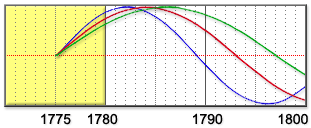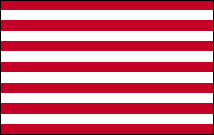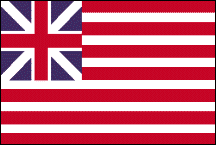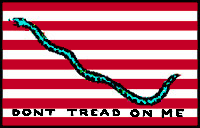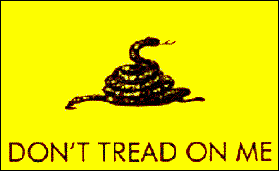THE BEGINNING:
LABOR PAINS
War was Approaching Before 1775. British legislation demanded higher duties to finance military and governing expenses to run the colonies. American colonists wanted to govern themselves. A pulling away brought force from Britain. The resulting conflict was the birth of a nation. Fighting broke out in Spring 1775 and a new nation was struggling to keep its independence. The following year, that independence was declared.
Labor Pains Increased. The Revenue Act of 1764 raised import duties and the Stamp Act of 1765 demanded the purchase of tax stamps. The Townsend Acts increased duties even further in 1767 and defiant colonists harassed British custom officials. The officials summoned British soldiers who shot five of the stone throwing colonists in "The Boston Massacre. When Americans formed Non-Importation Agreements, the British repealed duties on everything, except tea. Then the British Tea Act adjusted duties on tea in 1773, so, 150 patriots disguised themselves as Mohawks, boarded tea bearing ships in Boston Harbor and tossed 342 barrels overboard in the "Boston Tea Party." The British responded with three "Coercive Acts" in 1774 to close the port pending restitution, allow criminal extraditions, and commandeer private homes to quarter British soldiers. These events and others, became greater and closer together as the birth of the nation approached.
BIRTH: MARCH 21st, 1775 - MARCH 21st, 1776
"Give Me Liberty, or Give Me Death" Was the Cry of a New Born Nation at the beginning of the Physical Cycle. This compelling conclusion to Patrick Henry's speech at the Virginia Convention meeting in Richmond, came on March 23, 1775. In this opposition to British rule, the Collective Conscious of an entire group of colonists became voiced through a single person. It was the cry of a new born nation.
The Battles at Lexington and Concord Were Birth Pains of a New Nation. The separation from our mother country was painful. British troops marched toward Concord, Massachusetts to destroy a colonial gunpowder depot on the evening of April 18-19, 1775. Two riders, including Paul Revere, were sent to warn colonists that "The British are coming, the British are coming!"
Colonists engaged the British when they reached Lexington on April 19th. Then "The shot heard 'round the world" began the Battle of Lexington, and the Revolutionary War.
"Common Sense" by Thomas Paine was published in January 1776 and it sold more than 100,000 copies in 3 months. It urged the end of the union with England. This was followed by a series of pamphlets that Paine would begin in the following December titled,"The Crisis," that began with the immortal words, "These are the times that try men's souls."
The Mecklenburg Declaration of Independence is the believed by many, and contested by some, to be have been signed in
Mecklenburg County of North Carolina on May 20, 1775 to defend the autonomy of the colonies. This came almost a year before the signing of the Declaration of Independence in Philadelphia. North Carolina was the first of the colonies to instruct its delegates to Continental Congress to vote for independence from Britain it is notes to this day that is was "First in Freedom." This would make the "Meck Deck" America,s first birth certificate.
The Continental Congress Was the Mind of a New Nation at the beginning of the Intellectual Cycle. It convened in Philadelphia's Independence Hall on May 10, 1775. Resolutions were presented that denounced all British rule and placed power in the provincial congress. Another resolution established the colonies in a state of defense on May 15th. Canada was asked for help after a measure on May 29th. The Continental Congress was now an independent body free from British rule, and a new Intellectual base.
The Continental Army Was the Body of a New Nation. The Continental Congress established it on June 14, 1775, and raised $2 million in bills of credit, or Continental Money to support it on June 17, 1775. George Washington was chosen to lead the new army. He took command on July 3, 1775. Congress also established the Continental Navy and the Continental Marines in November. The nation now had an army, a navy, and currency, for its Physical base.
The American Flag Symbolized the Heart of a New Nation at the beginning of the Emotional Cycle. The first flag had 13 alternating stripes of red and white, and a field of blue in the upper left corner that bore the crosses of St. George and St., Andrew. It became known by such names as Congress Colors, the Grand Union Flag, and the First Navy Ensign. It is believed that Lt. John Paul Jones raised this flag aboard the "Alfred" upon the Delaware River at Philadelphia on December 3, 1775. The flag was first raised upon land on January 1, 1776, in Massachusetts during a colonial seizure of Boston. This remained the American flag until June 14, 1777, when the crosses were replaced with 13 stars in a circle representing the 13 colonies as the Stars and Stripes. The nation now had a unifying symbol.
America Was Alive in '75. Patrick Henry voiced his memorable stand for liberty in March. The Continental Congress became independent in May, and later evolved into the federal government. The army was established in June and new currency was also formed in June. The Post Office was in place in July. The Navy and Marines were established in November. Then the new flag was unfurled in December. A fully born nation continued the fight of the American Revolution. Wins and losses came to both sides until the British surrendered in 1781. The Revolutionary war was over and a new set of Cycles was revolving in the world



